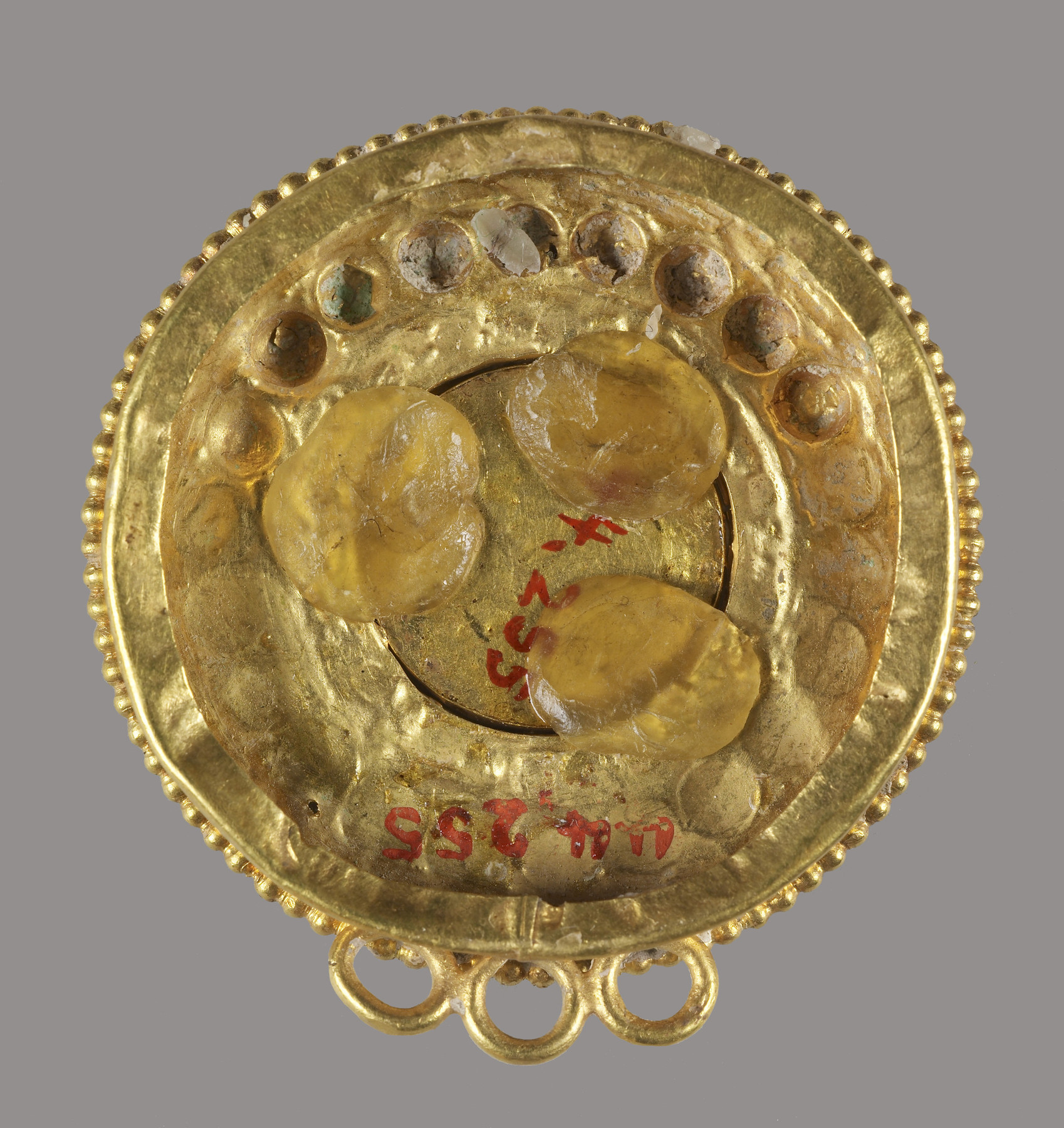Fibula with an Enamel Bust
Only a few such fibulae set with a central enamel have been excavated from Langobardic sites. Pearls were likely strung on wire through the loops surrounding the enamel, and pendants would have dangled from the three loops at the bottom. The craftsman who made this delicate pin probably copied Byzantine imperial jewelry for Langobardic rulers.
Provenance
Provenance (from the French provenir, 'to come from/forth') is the chronology of the ownership, custody, or location of a historical object. Learn more about provenance at the Walters.
[From Comacchio (?)]; Henry Walters, Baltimore, by purchase; Walters Art Museum, 1931, by bequest.
Exhibitions
| 2016 | Waste Not: The Art of Medieval Recycling. |
| 1998-2001 | Highlights from the Collection. The Walters Art Gallery, Baltimore. |
| 1979-1980 | Jewelry - Ancient to Modern. The Walters Art Gallery, Baltimore. |
| 1947 | Early Christian and Byzantine Art. Baltimore Museum of Art, Baltimore. |
| 1976-1977 | Romans and Barbarians. Museum of Fine Arts, Boston, Boston. |
Conservation
| Date | Description | Narrative |
|---|---|---|
| 5/1/1949 | Treatment | repaired |
| 9/25/1964 | Treatment | examined for condition |
Geographies
Italy, Comacchio (Place of Origin)
Measurements
H: 2 x W: 1 7/8 x D: 7/16 in. (5.01 x 4.7 x 1.1 cm)
Credit Line
Acquired by Henry Walters
Location in Museum
Centre Street: Third Floor: Migration and Early Medieval Art
Accession Number
In libraries, galleries, museums, and archives, an accession number is a unique identifier assigned to each object in the collection.
In libraries, galleries, museums, and archives, an accession number is a unique identifier assigned to each object in the collection.
44.255






